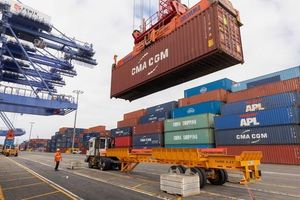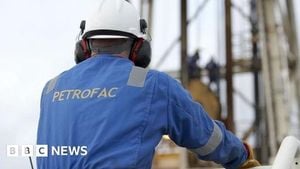Volatility once again swept across Wall Street on October 21, 2025, as stocks, gold, and cryptocurrencies all took a tumble. According to Bloomberg, the Nasdaq 100 slipped by 1% after a less-than-stellar outlook from Texas Instruments Inc. and a dramatic 10% plunge in Netflix Inc. shares. But perhaps the most closely watched story of the day involved Tesla Inc., whose stock slid further after hours as the company posted its third-quarter earnings—and then held a lively, headline-grabbing analyst call led by CEO Elon Musk.
For Tesla, the numbers were a mixed bag. The electric vehicle giant reported record quarterly revenue of $28.1 billion, surpassing Wall Street’s expectations and marking an all-time high for the company. The surge was powered by a record number of vehicle deliveries, a point that senior analyst Thomas Monteiro at Investing.com said “should carry more weight with investors than the EPS miss.” Yet, profit fell short: adjusted earnings per share came in at $0.50, below the consensus estimate of $0.54, and operating income dropped a stark 40% year over year. Tesla attributed the decline to higher average vehicle costs and a sharp increase in tariffs, with the total tariff impacts in the third quarter alone exceeding $400 million, according to Tesla’s CFO.
After the earnings release, Tesla’s stock dropped about 1.6% in after-hours trading and continued to fall as Musk fielded questions from analysts and retail investors. The call itself was anything but dull. Musk, never one to shy away from controversy, railed against two major proxy firms, ISS and Glass Lewis, who had recommended shareholders vote against his proposed $1 trillion pay package. “They have made many terrible recommendations in the past, that if those recommendations had been followed, would have been extremely destructive to the future of the company,” Musk declared, calling the firms “corporate terrorists.” Shareholders will vote on the compensation package on November 6.
But the drama didn’t stop there. Musk spent much of the call talking up Tesla’s ambitious future, particularly in robotics and artificial intelligence. He teased the next generation of the company’s Optimus humanoid robot, promising a prototype reveal in February or March 2026. “It won’t even seem like a robot, it will seem like a person in a robot suit,” Musk said, echoing the company’s memorable first unveiling of its humanoid ambitions. He described bringing Optimus to market as “incredibly difficult,” noting the lack of a supply chain for humanoid robots and the immense engineering challenges involved—especially in creating a robotic hand as capable as a human’s.
Still, Musk’s vision for Optimus is grand. He described the robot as a potential “infinite money glitch,” capable of achieving five times the productivity of a person per year by working around the clock. According to Musk, Optimus robots are already walking the halls of Tesla’s Palo Alto engineering headquarters, operating “24 hours a day, seven days a week.” Any visitor, he said, can ask an Optimus robot to escort them to a meeting room. The company is installing first-generation production lines for the bot, with volume production anticipated in the near future.
Artificial intelligence, more broadly, was a recurring theme. Musk explained that Tesla’s AI models are just a fraction of the size of those powering xAI’s Grok, or rivals like OpenAI’s GPT or Google’s Gemini. “You could not possibly squeeze Grok onto a car, that’s for sure,” he quipped, underscoring the unique challenges of automotive AI. Musk also teased “quite radical” AI improvements for Tesla vehicles, musing, “It might almost be too much intelligence. I do wonder, like, how much intelligence should you have in a car? It might get bored.”
The company’s ambitions for autonomous driving remain undimmed. Musk stated that Tesla’s fleet in Austin has already covered more than 250,000 miles without a driver in the driver’s seat, and that robotaxis will be operating in eight to ten metro locations—including Nevada, Florida, and Arizona—by the end of 2025, pending regulatory approvals. The Cybercab, Tesla’s next leap in autonomous vehicles, is set to begin production in the second quarter of 2026. “We’re at a critical inflection point for Tesla,” Musk said, emphasizing that the era of autonomy and robotics is just beginning for the company.
Despite these bold plans, Tesla still faces near-term uncertainty, particularly from shifting trade, tariff, and fiscal policies. The company’s earnings release noted that these factors make it difficult to forecast the impact on supply chains, cost structure, and demand. The CFO highlighted that the ramp-up of Tesla’s Shanghai megafactory has helped sidestep some tariff impacts by supplying non-U.S. demand, but the headwinds remain substantial.
Meanwhile, Tesla is pushing to expand vehicle production as quickly as its supply chains will allow, targeting an annualized rate of 3 million vehicles within the next 24 months. Over the summer, the company struck a $16.5 billion deal with Samsung for chip manufacturing at a new plant in Taylor, Texas, expected to open in 2026. Both Samsung and TSMC will be involved in producing Tesla’s new A15 self-driving computer chip, with Musk stating, “Our goal, explicit goal, is to have an oversupply of AI5 chips.”
Not all of Tesla’s projects are moving at warp speed, however. The long-promised Tesla Roadster remains in “Design Development” status, with no launch date announced. Musk, in a nod to customers who put down $50,000 deposits years ago, called the Roadster “the cherry on the icing on the cake”—but emphasized that other projects are taking precedence.
On the product front, Tesla recently introduced lower-cost “standard” versions of its Model Y and Model 3, priced at $39,990 and $36,990, respectively. However, the stripped-down features and only modest price drop left many analysts and customers underwhelmed. Some, like former Nissan executive Andy Palmer, questioned whether these models do enough to fend off fierce competition from Chinese EV giants like BYD, whose cheapest model starts at less than $10,000 in China and recently outsold Tesla in Europe.
Regulatory issues also surfaced, as Tesla recalled nearly 13,000 vehicles built this year due to a defect that could cause sudden loss of battery power. Owners of affected 2025 Model 3s and 2026 Model Ys will need to bring their cars in for a free part replacement, a departure from Tesla’s usual practice of over-the-air fixes. Fortunately, no collisions, injuries, or deaths were reported in connection with the defect.
Wall Street’s reaction to Tesla’s latest chapter has been mixed. While some, like Wedbush Securities’ Dan Ives, see the dawn of the “AI era” as a trillion-dollar opportunity, others, including Morningstar’s Dave Sekera, caution that the market may be overestimating the speed and scale of Tesla’s earnings growth. Price targets for Tesla stock now range from $355 at Cantor Fitzgerald to $600 at Wedbush, reflecting both the company’s potential and the risks that lie ahead.
As volatility continues to swirl in global markets—and as the U.S. weighs new trade restrictions and ramps up sanctions on Russia—Tesla finds itself at a crossroads. With record revenues, ambitious plans for AI and robotics, and a CEO who refuses to shrink from controversy, the company’s next moves will be watched closely by investors, competitors, and regulators alike.
For now, all eyes are on the November 6 shareholder vote, the much-anticipated Optimus prototype reveal, and whether Tesla can turn its bold vision into reality amid a shifting economic and geopolitical landscape.




